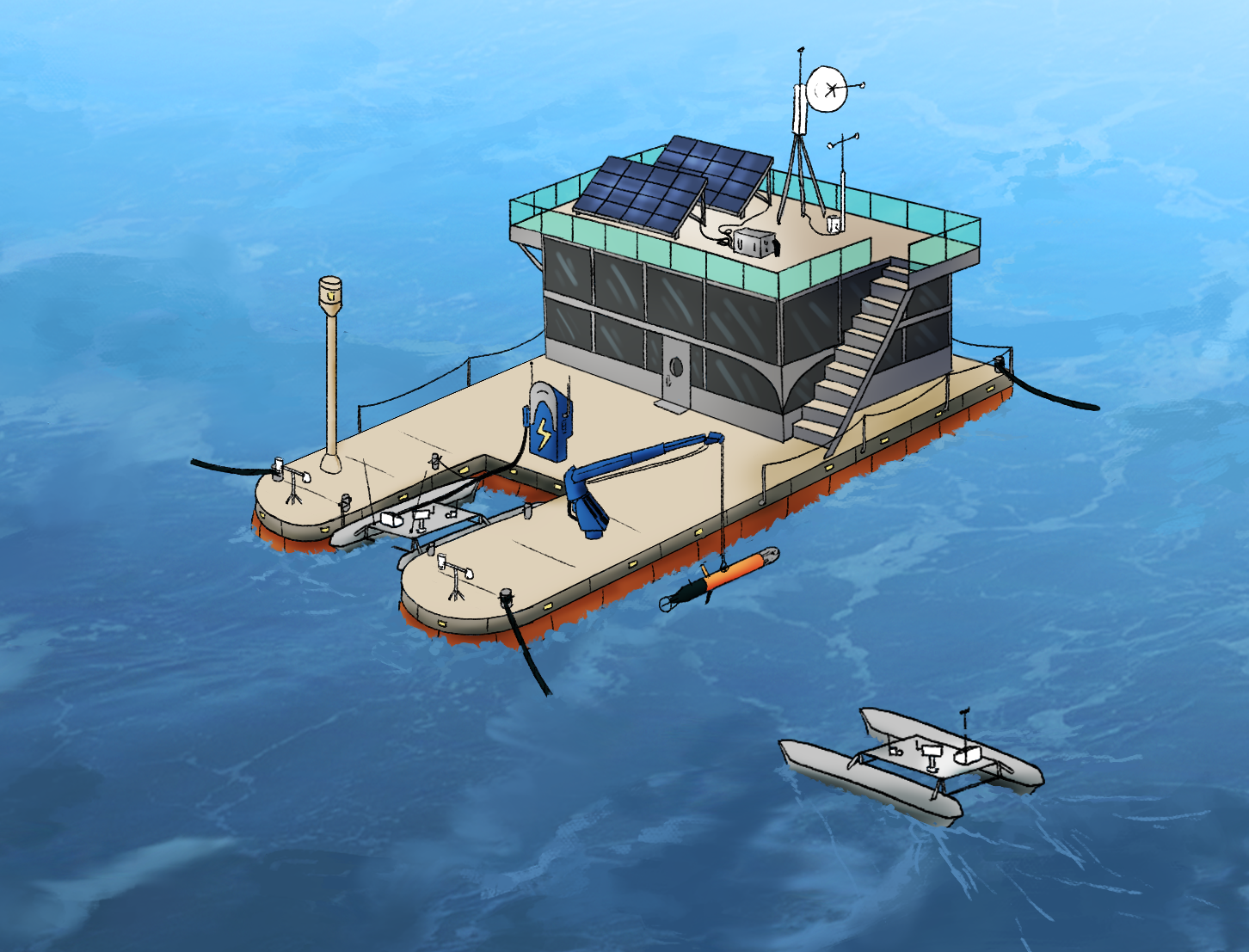Pilot Site 2: Smart Marina
Smart Marina
Seamless Monitoring and Sustainable Navigation
Located in Rijeka/Kvarner area, the Smart Marina pilot site acts as a crucial testing ground for real-time maritime monitoring, environmentally friendly marine traffic management, and long-term data collection. By combining fixed and mobile sensor systems, this site showcases how advanced digital infrastructure can enhance vessel tracking, collision avoidance, and environmental stewardship in busy coastal waters.

Marina Station: Docking, Recharging, and Data Sharing
A central feature is the marina station—comprising a docking platform for autonomous surface vessels, plus a recharging system powered by green energy sources. Real-time data from cameras, lidar sensors, and short-range radars help researchers develop and validate autonomous docking algorithms. Vessels seamlessly offload data for long-term analysis, enabling in-depth insights into maritime traffic and port operations.
Floating platform: Remote Observation and Control
Situated at a vantage point overlooking Kvarner Bay, the platform is equipped with:
- AIS (Automatic Identification System) to track vessel positions and movements.
- Software-Defined Radio for capturing RF signals emitted by ships and other marine infrastructure.
These integrated systems facilitate automated vessel detection, collision-warning alerts, and a deeper understanding of marine traffic patterns. Collected data are processed locally and shared with partner labs for further research.
Moored Station: Subsurface Monitoring
In deeper waters—where depths reach 128 meters—a moored buoy station gathers crucial oceanographic and acoustic data:
- Surface Buoy powered by solar panels, equipped with weather instruments and wave sensors for real-time recording of local conditions.
- Fluorometers and Turbidity Sensors to detect pollutants and track water quality.
- ADCP (Acoustic Doppler Current Profiler) for current velocity profiles along the water column.
- Acoustic Recorders placed at varying depths to capture the bay’s soundscape, including noise from passing vessels and marine life.
Fostering a Smarter, Greener Marine Environment
By merging dockside technologies, shore-based radar and RF systems, and subsurface environmental sensors, Pilot Site 2 drives the development of cutting-edge solutions that make marinas safer, more efficient, and more sustainable. Researchers, industry stakeholders, and policy-makers gain a comprehensive understanding of maritime dynamics—supporting informed decision-making, minimizing environmental impacts, and propelling the blue economy toward a greener future.
